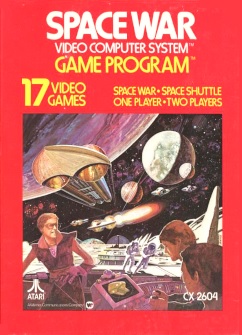| Space War | |
|---|---|
 | |
| Developer(s) | Atari, Inc. [1] |
| Publisher(s) | Atari, Inc. |
| Programmer(s) | Ian Shepard [2] |
| Platform(s) | Atari 2600 |
| Release | |
| Genre(s) | Multidirectional shooter |
| Mode(s) | Single-player, multiplayer |
Space War is a multidirectional shooter video game released by Atari, Inc. in 1978 for the Atari Video Computer System (renamed to the Atari 2600 in 1982). The game is a version of Spacewar! , the 1962 computer game by Steve Russell. [4] It was released by Sears as Space Combat for its Atari compatible Tele-Games system. [5] A version for the Atari Lynx was planned but never released. [6] [7]